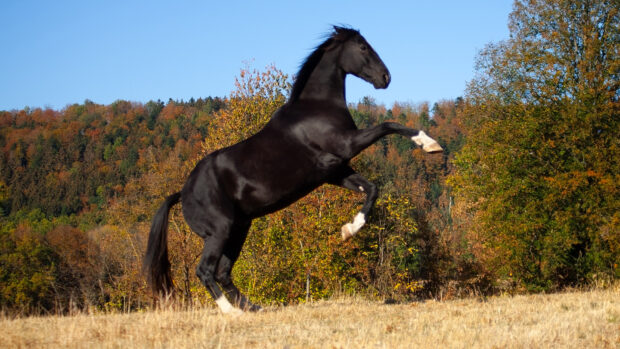Have you ever wondered if those zebra-patterned fly rugs really do fend off horse flies? New research has confirmed that striped equids do indeed have a natural defence against blood-sucking insects.
The study led by Tim Caro, a professor of wildlife, fish and conservation biology at UC Davis, compared the behaviour of tabanids (horseflies) around both captive plains zebras and uniformly coloured domestic horses living at a yard in north Somerset.
Zebras’ stripes are increasingly considered to have evolved in response to biting insects, although the mechanism by which they ward off attack has not been clear.
The study, carried out in the summers of 2016 and 2017, showed that although horse flies circled both horses and zebras at the same rate, fewer landed on the zebras.
The effect of stripes on tabanids was also demonstrated when the horses wore “coats” of different colours — when wearing stripes, attack rates by the flies were far lower than when the equines were dressed in plain black or white. Attack rates on their naked heads remained the same, however.
To understand more of the mechanism by which the stripes affected the flies, researchers analysed video footage, which showed that the insects approached the zebras faster and failed to decelerate before they made contact.
This meant more flies just touched rather than landed on the zebras, compared with the horses.
“Taken together, these findings indicate that, up close, striped surfaces prevented flies from making a controlled landing but did not influence tabanid behaviour at a distance,” said the authors of the study, which was published in Plus One on 20 February.
Thanks to their stripes, zebras were able to counteract the flies by swishing their tails and sometimes running away, whereas horses demonstrated much higher rates of skin twitching.
“As a consequence of zebras’ striping, very few tabanids successfully landed on zebras and, as a result of zebras’ changeable behaviour, few stayed a long time, or probed for blood,” the report noted.
Continues below…
Rare Shetland/zebra foal born
Animal magic at the Eden Ostrich World in Cumbria, where an unexpected foal with stripes has been born

Subscribe to Horse & Hound magazine today – and enjoy unlimited website access all year round

Are these the strangest markings you’ve ever seen? *PICTURES*
You'd be excused for thinking you're seeing things with this array of unusual horse markings. Step aside snips, stripes and
In their conclusion, researchers also observed that the flies seemed to find a grey horse harder to see — although the tabanids’ landing rates did not differ significantly.
“This was in contrast to comparisons between zebras and horses of other colours where circling and touching rates did not differ but where zebras enjoyed fewer landings per unit time. More work on grey coats in relation to fly annoyance is clearly needed because stripes will appear grey from a distance to flies,” they said.
The function of zebras’ stripes has been of interest for scientists for more than 150 years and hypotheses about their purpose have included confusion of predators, signalling to conspecifics and thermoregulation but recent evidence has all suggested avoidance of biting insects is their primary role.
Protection from tabanids is of particular importance in zebras’ native African habitat, where the flies carry fatal diseases including trypanosomiasis, equine infectious anemia, African horse sickness and equine influenza. Zebras are particularly susceptible to infection because their thin coats permit biting flies to probe successfully.
For all the latest news analysis, competition reports, interviews, features and much more, don’t miss Horse & Hound magazine, on sale every Thursday.




